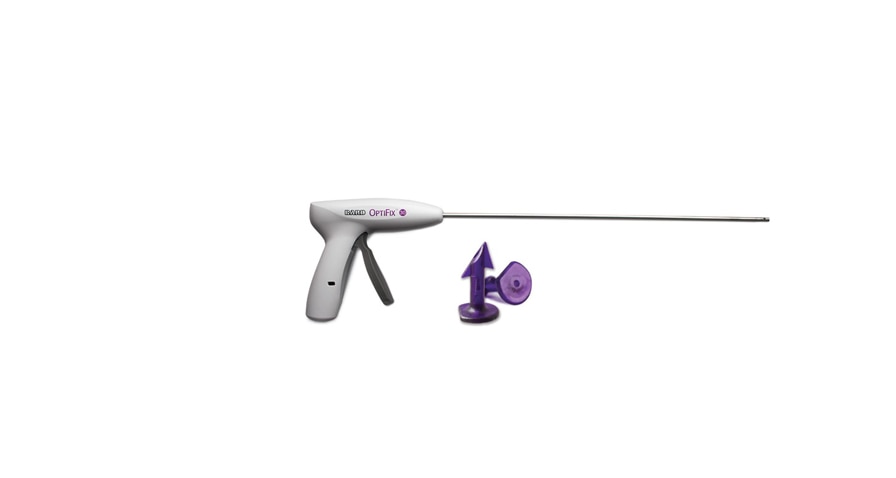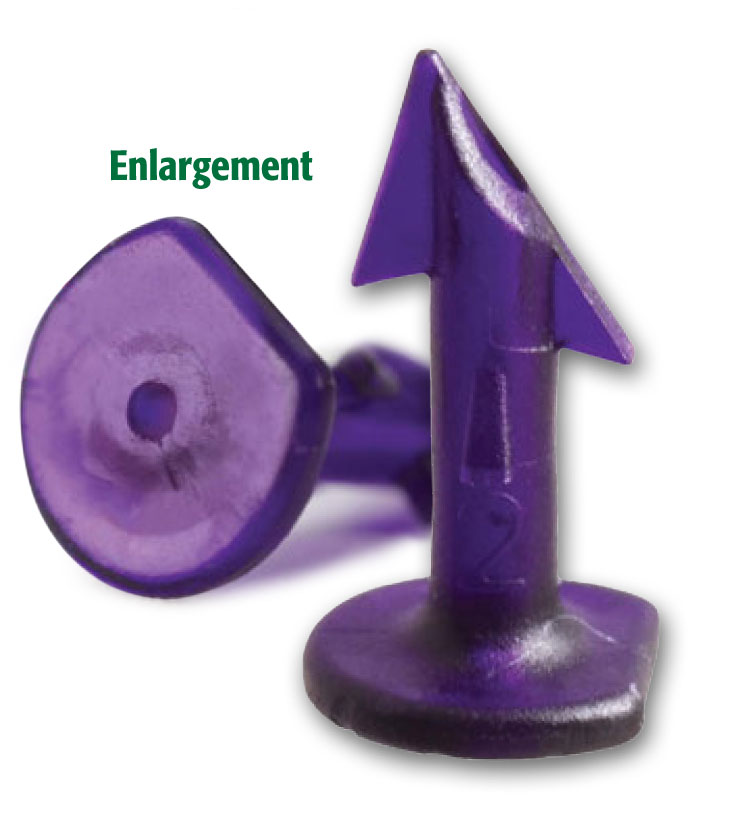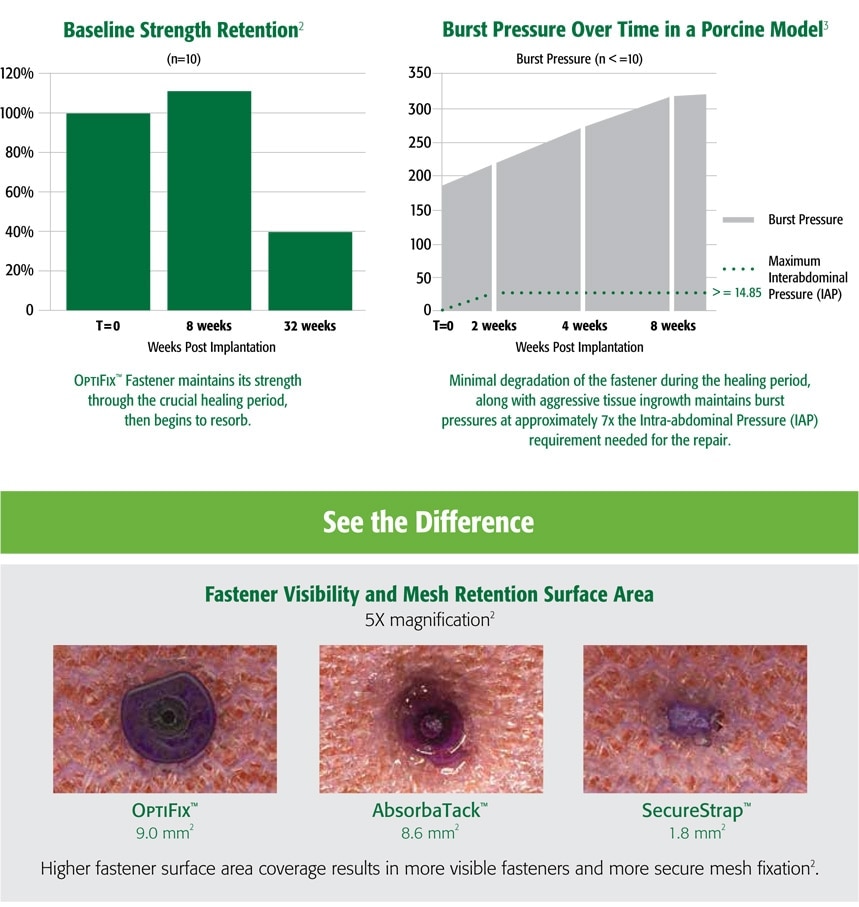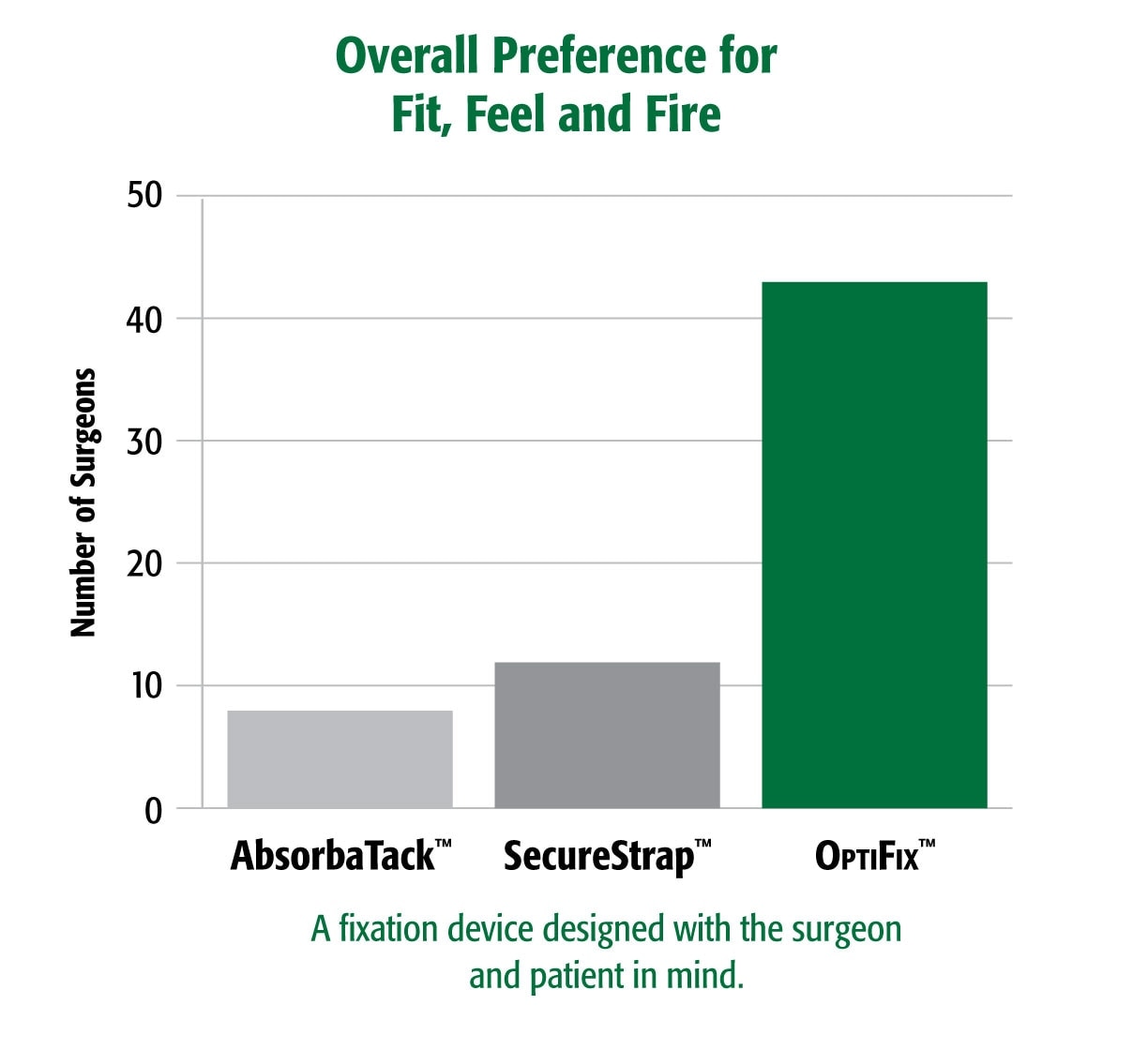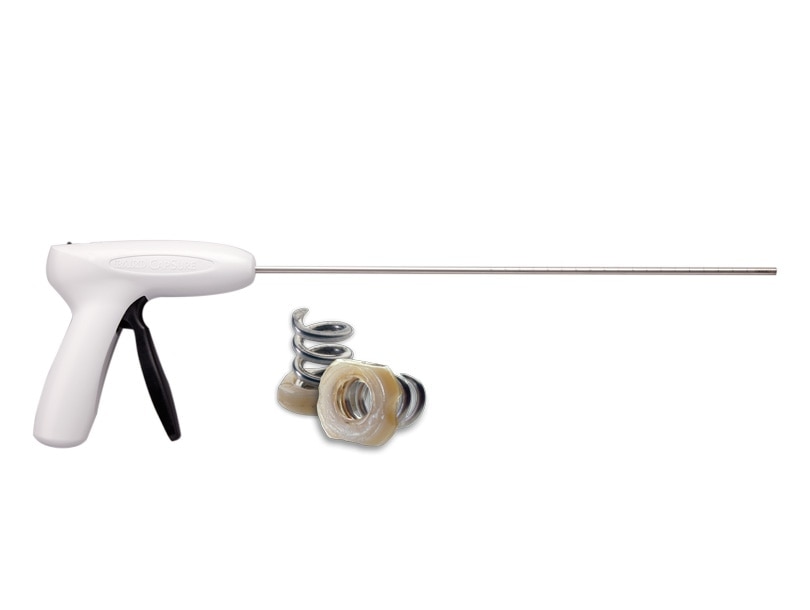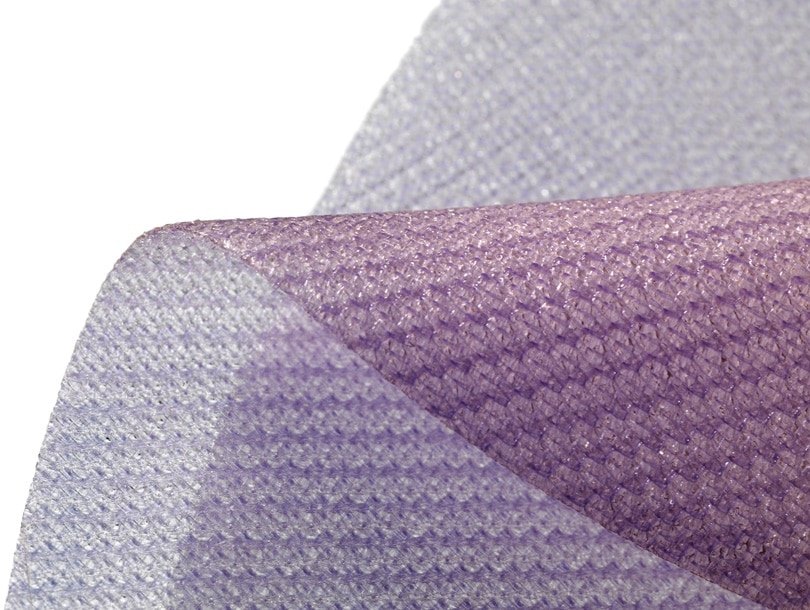1. Preclinical data on file. Results may not correlate to clinical outcomes.
2. C. R. Bard Inc., bench data on file.
3. Preclinical data on file. Results may not correlate to clinical outcomes.
4. Survey of surgeons attending an international surgical conference. Data on file.
Indications
The OptiFix™ Absorbable Fixation System is indicated for the approximation of soft tissue and fixation of surgical mesh to tissues during open or laparoscopic surgical procedures, such as hernia repair.
Contraindications
1. This device is not intended for use except as indicated.
2. Do not use this device where hemostasis cannot be verified visually after application.
3. Contraindications associated with laparoscopic and open surgical procedures relative to mesh fixation apply, including but not limited to:
- Fixation of vascular or neural structures
- Fixation of bone and cartilage
- Situations with insufficient ingrowth of tissue into the mesh over time, which could result in inadequate
fixation once the fastener is absorbed.
4. Carefully inspect the area in the vicinity of the tissue being fastened to avoid inadvertent penetration of
underlying structures such as nerves, vessels, viscera or bone. Use of the OptiFix™ Absorbable Fixation
System in the close vicinity of such underlying structures is contraindicated. For reference, the length of
the fastener below the fastener head is 6.1 mm, the fastener head is another 0.6 mm (total 6.7 mm).
5. This device should not be used in tissues that have a direct anatomic relationship to major vascular structures.
This would include the deployment of fasteners in the diaphragm in the vicinity of the pericardium,
aorta, or inferior vena cava during diaphragmatic hernia repair.
Warnings
The device may not fixate through prosthetics derived from biologic material such as xenografts and allografts. Prosthetic should be evaluated for compatibility prior to use. After use, the OptiFix™ Absorbable Fixation System may be a potential biohazard. Handle and dispose of in accordance with any local and federal laws regarding medical waste.
Adverse Reactions
Adverse reactions and potential complications associated with fixation devices such as the OptiFix™ Absorbable Fixation System may include, but are not limited to the following: hemorrhage; pain, edema and erythema at wound site; allergic reaction to Poly(D, L)- lactide; infection/septicemia; hernia recurrence/wound dehiscence.
